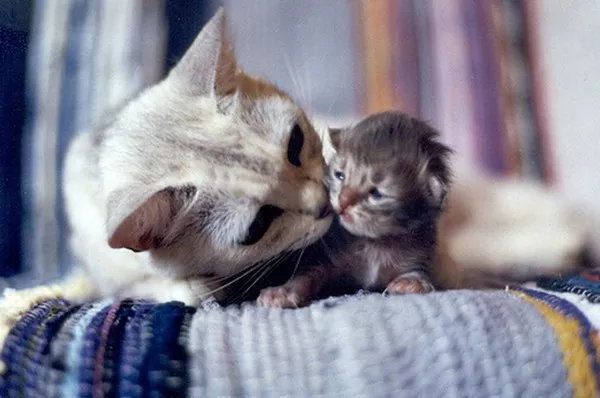“How much formula should a 2-week-old kitten eat?” is a critical question that fosters the well-being of these delicate felines. At two weeks of age, kittens are in a crucial developmental phase, relying solely on their caregiver for sustenance. Proper nutrition during this period is paramount for their growth, immunity, and overall health. In this comprehensive guide, we delve into the intricacies of feeding a 2-week-old kitten, addressing not only the quantity of formula but also crucial considerations, feeding frequency, and potential challenges.
Understanding the Nutritional Needs of 2-Week-Old Kittens
As neonatal kittens transition from nursing to formula feeding, understanding their nutritional requirements is fundamental. The formula must replicate the essential nutrients found in mother’s milk, including proteins, fats, vitamins, and minerals crucial for optimal growth. A high-quality commercial kitten milk replacer, readily available in pet stores, serves as the closest substitute to feline mother’s milk.
See Also:Can a 2-Week-Old Kitten Drink Water? You Need to Know
Determining the Right Quantity
Weight-Based Feeding Guidelines
A general rule of thumb for feeding a 2-week-old kitten is to provide formula in a quantity that equals about 8 to 10% of their body weight. This can be calculated by multiplying the kitten’s weight (in ounces) by the recommended percentage. Regular weighing is crucial during this stage to adjust the feeding amount as the kitten grows.
Gradual Increase in Volume
While adhering to weight-based guidelines, it’s essential to introduce formula gradually. Begin with a smaller volume and monitor the kitten’s response before increasing the amount. Sudden changes in diet may upset their delicate digestive systems.
Feeding Frequency
Mimicking Natural Nursing Patterns
Understanding the natural nursing patterns of kittens is vital in establishing an effective feeding schedule. At two weeks old, kittens typically feed every two to three hours, including nighttime feedings. This mimics the frequency of nursing from their mother and ensures they receive a consistent flow of nutrients crucial for their rapid development.
Nighttime Feedings
Although it may be challenging for caregivers to maintain a strict feeding schedule during the night, ensuring a steady intake of formula is crucial. Kittens at this age require frequent nourishment for sustained energy levels and proper growth.
Feeding Techniques and Considerations
Bottle Feeding Techniques
Bottle feeding is the primary method for providing formula to 2-week-old kittens. Caregivers should use a kitten-specific nursing bottle and nipple to simulate the natural suckling motion. Ensuring the proper temperature of the formula (around body temperature) and allowing the kitten to nurse at its own pace are crucial aspects of successful bottle feeding.
Stimulating Elimination
Just like their mother would, caregivers must stimulate the kitten’s elimination process by gently rubbing their genital area with a warm, damp cotton ball or tissue after each feeding. This mimics the mother’s grooming behavior and helps in maintaining the kitten’s cleanliness.
Potential Challenges and Troubleshooting
Recognizing Signs of Overfeeding or Underfeeding
Monitoring the kitten’s behavior and body condition is essential to avoid overfeeding or underfeeding. Signs of overfeeding may include diarrhea, bloating, or restlessness, while underfeeding may result in lethargy, weight loss, or constant crying.
Addressing Refusal to Feed
Occasionally, a 2-week-old kitten may refuse to feed. This could be due to various reasons such as illness, stress, or discomfort. In such cases, consulting with a veterinarian is crucial to identify and address the underlying issue.
Transitioning to Solid Food
Introducing Solid Food Gradually
Around the age of 3 to 4 weeks, kittens begin to show interest in solid food. Caregivers should introduce a high-quality wet kitten food, mixed with formula initially, to ease the transition. The gradual introduction of solid food helps in developing their chewing skills and adapting to a more diverse diet.
Weaning Process
As the kittens become more adept at consuming solid food, the weaning process begins. This gradual shift from formula to solid food is a critical phase that requires patience. Caregivers should continue monitoring the kittens’ weight, behavior, and overall health to ensure a smooth transition.
Conclusion
In conclusion, the question of “how much formula should a 2-week-old kitten eat?” involves a nuanced approach that considers the individual needs and characteristics of each kitten. By understanding the nutritional requirements, establishing a proper feeding schedule, and addressing potential challenges, caregivers can play a pivotal role in the healthy development of these vulnerable felines. As the kittens grow, the transition to solid food marks another significant milestone in their journey towards independence and a thriving, active life. Always consult with a veterinarian for personalized guidance, ensuring the best possible care for these precious young companions.
Related Topics:
Why 2-Week-Old Kittens Cry When Picked Up?
Can You Touch 2-Week-Old Kittens?
How Long Do 2-Week-Old Kittens Sleep?
























